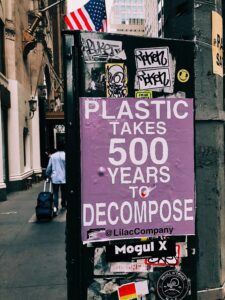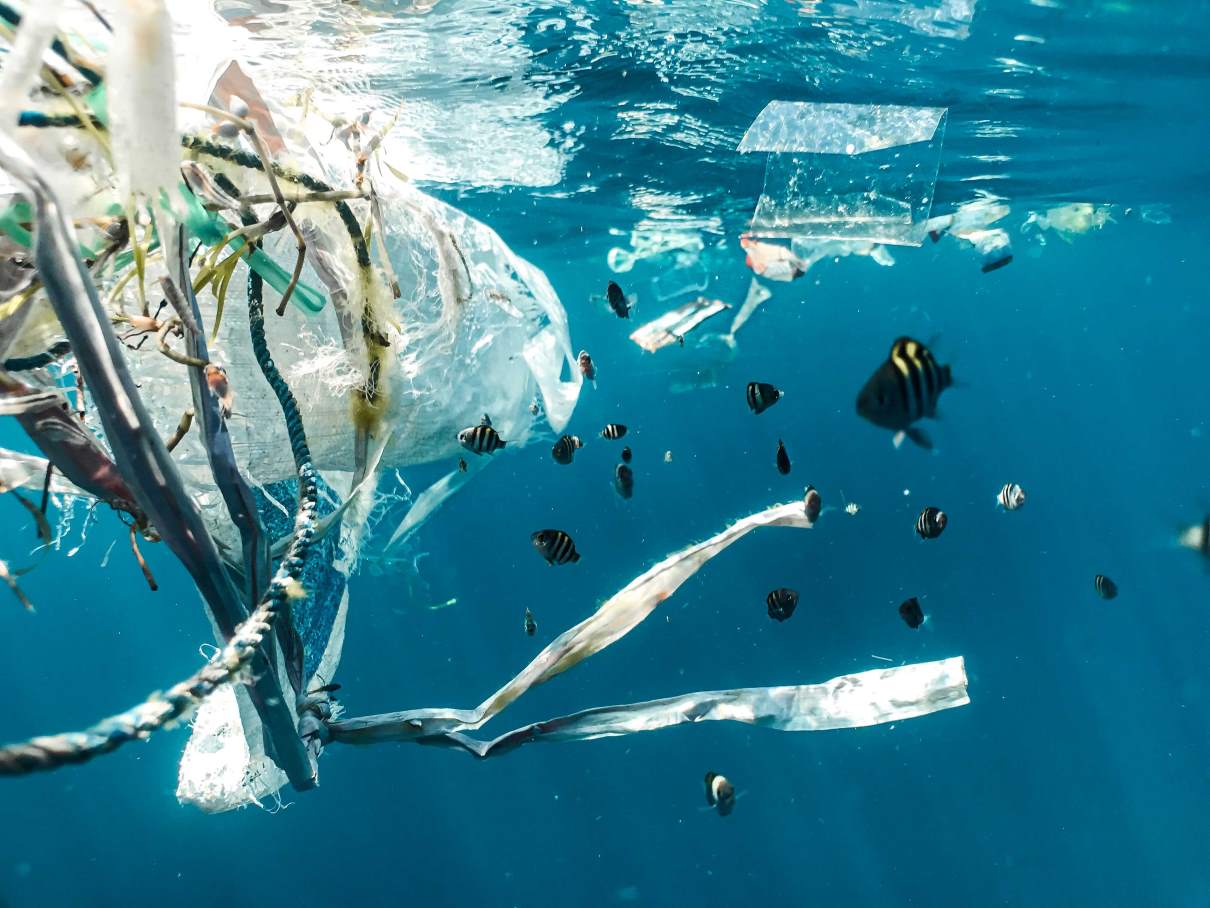By: Danalyn Ramos
Introduction
In today’s world, plastic has become an indispensable part of our daily lives, so much so that most people don’t consider the sheer magnitude in which Plastics are produced, consumed, and disposed of in our environment, and what potential effects come from this mass production process. In fact, microplastic pollution was identified to be among the most relevant topics for biodiversity conservation at global scale (Sutherland et al., 2010). Plastics are cheap and incredibly versatile, they can be found in things such as packaging of our groceries and food, cookware, medical devices, electronics, furniture, clothing, and much more, it seems impossible to escape plastics in our modern environment. However, the convenience comes at a cost –The proliferation of microplastics, tiny plastic particles that pose a significant threat to our environment and health. In this blog, we will explore the world of microplastics, their sources, impact, and what we can do to mitigate the negative effects of plastic pollution in our environment.
Microplastics are small plastic particles, typically less than 5 millimeters in size. They come in two primary forms: primary microplastics and secondary microplastics. Such materials have a low biodegradation rate and, thus, mostly remain in the environment.
- Primary Microplastics: These are intentionally manufactured small plastic particles, often found in personal care products like exfoliating scrubs, toothpaste, and cosmetics. These tiny beads are designed to provide texture, but they pose a significant risk when they enter aquatic ecosystems.
- Secondary Microplastics: These are created when larger plastic items, such as bottles, bags, and packaging, break down into smaller pieces due to environmental factors like sunlight, heat, and mechanical action. These secondary microplastics are more common and make up a significant portion of microplastic pollution.
Sources of Microplastics
- Plastic Production: During the manufacturing process, some plastic particles are released into the atmosphere. Microplastics can be transported through the atmosphere and deposited onto land and water surfaces. This phenomenon occurs through processes like air currents, precipitation, and dust deposition. Micro plastic can also be inhaled through the air due to this production process release.
- Plastic Packaging: Packaging is the largest end-use market segment accounting for just over 40% of total plastic usage. Items like plastic bags, bottles, and containers slowly degrade when exposed to the elements. As plastic waste degrades, it breaks into smaller particles, contributing to the microplastic problem.

- Cosmetics and Personal Care Products: One of the most well-known sources of primary microplastics is found in personal care products like exfoliating scrubs, toothpaste, and lotions. These products often contain microbeads made of plastic, which, when washed down the drain, end up in waterways and eventually the ocean.
- Paint and Coatings: Paints and coatings used on various surfaces, including buildings and road markings, contain microplastics. These can erode over time, releasing particles into the environment.
- Synthetic Fabrics: Washing clothes made from synthetic materials like polyester or nylon releases microfibers into the water system. The majority of microplastics from textiles are released the first few times textiles are washed. Wastewater treatment plants can filter out a large number of micro plastics, but not all. However, if adequate sewage and wastewater treatment systems are not in place, microplastics will be emitted to the aquatic environment (Eunomia and ICF, 2018).
- Tire Wear: Every time you drive your car, tiny particles of rubber from your tires are worn away and released into the environment. These rubber particles contain microplastics that can end up in soil and water.
The Impact of Microplastic: The presence of microplastics in our environment has far-reaching consequences:
1.Marine/Fresh water Ecosystems: Microplastics can be ingested by marine life, entering the food chain potentially harming both aquatic animals and humans who consume seafood. 100% of mussels tested have contained microplastics. Additionally, it is said that 1 million marine animals are killed by plastic pollution annually. Furthermore, according to The Ellen MacArthur Foundation, there will be more plastic in the oceans than fish by 2050. Similar mechanisms are reported to impact freshwater and estuarine environments. Concluding microplastics are amongst the contaminants of emerging concern for aquatic systems worldwide.
2.Human Health: It was determined that children consume about 500 micro plastic particles a day, and up to 50,100 particles can accumulate in an adult lifespan due to microplastic ingestion, that equates to eating about 40 pounds of plastic in your lifetime! Although the full extent of the health effects on humans is not yet fully understood, microplastics have been found in drinking water, food, and even the air we breathe, raising concerns about potential health risks.
3.Terrestrial Ecosystems: Microplastics can also impact terrestrial ecosystems with microplastic contamination on land being significantly larger than in the ocean. Textile waste that is dropped as litter, for example single-use face masks, ropes, tarpaulins, and lost garments, or discarded in landfill sites can degrade and lead to microfibers leaking into soil (Henry et al., 2019). Terrestrial ecosystems are affected by contaminated soil, affecting plant growth, organisms’ health, and soil health. However, more careful analyses of the dangers of microplastic pollution to terrestrial biodiversity are required.
Microplastics effects Study on Mice
Although there is limited documented research on Microplastics and their effects on the human body as of current, A study was conducted on the health effects of microplastics on mice, and the results are more than alarming. The study was conducted using polystyrene microplastics particles with two diameters (5 μm and 20 um) to investigate the tissue distribution, accumulation, and tissue-specific health risk of microplastics. The results indicated that microplastics accumulated in the liver, kidney, and gut, it seems the body tries to eliminate these toxins through the organs. In addition, further analyses of metabolomic profiles of the mice, indicates that microplastics exposure induced disturbance of energy and lipid metabolism as well as oxidative stress. In conclusion the study found that the distribution and accumulation of microplastics across mice tissues and revealed significant alteration in several biomarkers that indicate potential toxicity from microplastics exposure.
Mitigating the Microplastic Threat
While it may seem daunting, there are steps we can take to combat the microplastic threat:
- Reducing Plastic Use: Minimize your use of single-use plastics and opt for reusable eco-friendly alternatives such as refillable water bottles, reusable bags, glass containers, exc.
- Proper Waste Disposal: Increasing the reuse and recycling of textiles, which would reduce microplastic emissions during production and use.

- Support Legislation: Advocate for policies that restrict the use of microplastics in everyday products and promote recycling and responsible waste management.
- Volunteer: to help clean up areas heavily affected by plastic pollution, there are many great organizations such as The Ocean Clean Up organization that have affiliations all over the world.
- Microfiber Filters: Install microfiber-catching filters in washing machines to prevent microfibers from entering wastewater.
- Scientific Research: Support and promote research into the health effects of microplastics to better understand the risks. Research on innovative production processes and waste treatment technologies that prevent, reduce and capture microplastics across the textile lifecycle
Conclusion
The sources of microplastics are diverse and widespread, making it a challenging environmental problem. To combat this issue, we must adopt a multi-pronged approach that includes reducing the production and consumption of single-use plastics, improving waste management, recycling practices, and raising awareness about the impact of plastics and microplastics on our planet.
As individuals, we can make a difference by choosing products that are free from microplastics, reducing our plastic consumption, and supporting initiatives aimed at cleaning up and preserving our natural ecosystems. We can work as a collective to mitigate the silent threat of microplastics and ensure a healthier, cleaner planet for future generations.
References
de Souza Machado AA, Kloas W, Zarfl C, Hempel S, Rillig MC. Microplastics as an emerging threat to terrestrial ecosystems. Glob Chang Biol. 2018 Apr;24(4):1405-1416. doi: 10.1111/gcb.14020. Epub 2018 Jan 31. PMID: 29245177; PMCID: PMC5834940.
Sutherland WJ, Clout M, Cote IM, et al. A horizon scan of global conservation issues for 2010. Trends Ecol Evol. 2010;25:1–7.
Galloway TS, Cole M, Lewis C. Interactions of microplastic debris throughout the marine ecosystem. Nature Ecology & Evolution. 2017;1:0116.

